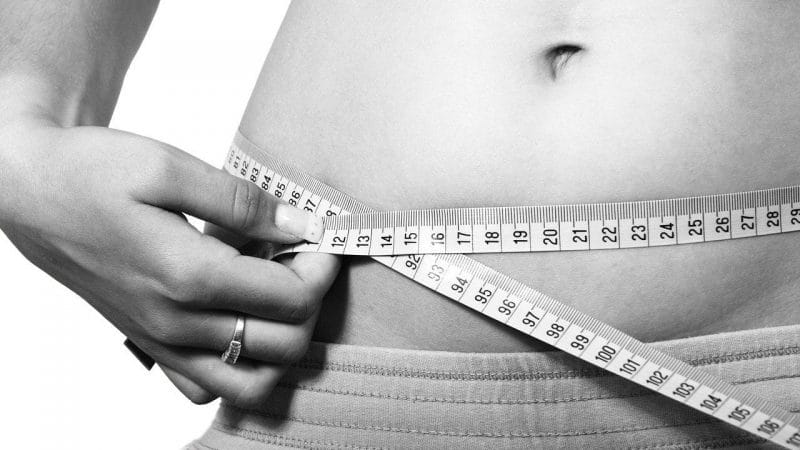35+ Stunning Weight Loss Statistics for Instant Motivation

On the surface level there is not much to know about weight loss statistics: exercise more and consume fewer calories and you will see drastic changes. However, experienced dieters know that the process is much more difficult. Right now, COVID curves are the latest challenge, but serious weight loss is another (undesirable) consequence of the virus.
Unfortunately, many people jump into dieting without knowing the real weight loss information. Here are the best statistics and facts on weight loss you need to know to jumpstart your own fitness journey.
Top 10 Key Weight Loss Facts & Stats
- 72% of Americans gained weight due to the lack of exercise in 2020.
- 35.67% of North Carolinians managed to lose weight during the global pandemic.
- The US weight loss market will experience a decline by 9% due to the global pandemic.
- $33 billion are spent on various weight loss products each year.
- The global weight management market will be worth $423.2 billion by 2027.
- The most downloaded fitness app in 2020 was Lose Weight App for Women-Workout at Home.
- 44% of Americans planned to exercise more in 2021.
- Gastric bypass surgery is the most popular surgery for weight loss, costing about $23,000.
- Americans who take cannabis before the gym exercise 43 minutes longer than those who don’t.
- CBD can reduce appetite and increase fat burning.
Keep on reading to find out more.
Weight Loss Statistics for the United States
How many Americans have problems with being overweight, and how much money do they spend on weight loss products?
1. 42.2% of adults over 20 in the United States are obese.
(TFAH)
With the rise of major fast-food restaurants and the fast-paced life, the obesity rates in the United States have significantly increased over the years — by a whopping 26% since 2008! Obesity is linked with many diseases such as stroke, type 1 and type 2 diabetes, and various types of cancer.
2. The highest obesity rates of 49.6% are among Black adults.
(TFAH)
According to the weight loss statistics, 44.8% of Latino adults are obese, followed by 42.2% of white and 17.4% of Asian adults.
3. 37.7% of adults in Mississippi are considered to be inactive.
(State of Childhood Obesity)
Being physically inactive means the person was not engaged in exercise or physical activity in the previous month. While the next in line are Oklahoma (34%), Kentucky (32.8%), and Louisiana (31.9%), the lowest physical inactivity rates were recorded in Utah (18.5%) and Colorado (18.7%).
4. 31.43% of New Yorkers gained more than 5lbs during the lockdown.
(RunRepeat)
Diet failure statistics imply that New York had the highest weight gain prevalence amidst the pandemic, with 40.52% of Americans reporting gaining weight due to the global lockdown, with 28.69% of people gaining over 5lbs.
New Jersey reported almost the same number (31.10%), followed by California (28.9%) and Texas (27.59%).
On that note, Tennessee had the smallest percentage of people that gained over 5lbs during the lockdown (20.29%).
5. 72% of Americans gained weight due to the lack of exercise in 2020.
(WebMD)
There are many reasons why Americans managed to put some weight during the pandemic. However, the most common is lack of exercise (72%) and stress eating (70%), while 59% claim both reasons were responsible for their current situation.
What is more, 21% of the surveyed admitted excessive alcohol consumption was the major reason for gaining extra weight.
6. Weight loss statistics from 2020 show 35.67% of North Carolinians managed to lose weight during the global pandemic.
(RunRepeat)
The next state with the highest rates of weight loss is Michigan (35.19%), then Maryland (34.72%), and Illinois (34.40%). The states with the lowest rates are Washington (28.62%) and Arizona (28%).
7. 28.5% of elderly adults in the United States were obese in 2019.
(Statista)
The many complications that come with obesity get more and more dangerous with age. The statistics looked into the percentage of American seniors above 65 years from 2013-2019. It was found that an estimated 28.5% of the elderly were obese in 2019, in comparison with 25.3% in the previous years.
Some weight loss benefits among the elderly include a reduced chance of developing depression and Alzheimer’s disease.
8. Adult obesity rates in the United States go over 35% in nine states, weight loss statistics for 2019 report.
(State of Obesity)
The increasing obesity rates to be the most prevalent in Mississippi and West Virginia at 39.5%, whilst Colorado displayed the lowest rates at 23%. 31 states have a 30% obesity rate, and 48 states can “boast” about 25%.
Adult obesity rates are still on the rise in all of the states.
9. Between $149 and $210 billion are spent annually in the US on medical costs due to obesity.
(Stop Obesity Alliance)
The largest amounts of money are spent on diseases caused by obesity, from diabetes to cardiovascular diseases. Judging by the weight loss industry stats, the overall cost will be even higher by 2030, with an annual $580 billion cost.
10. 47% of Americans started eating home-cooked meals, in response to COVID-19.
(Statista)
The global pandemic didn’t change only the way people interact with each other. It also had a major influence on their diet. As a result of the lockdown, almost half of Americans switched to home-cooked meals. 28% used delivery services less than usual, but 27% started munching more (snacks in particular).
11. The US weight loss market will experience a decline of 9% due to the global pandemic.
(Market Research)
Weight loss industry statistics from 2019 show us that the market reached its peak, and it was worth $78 billion. At the same time, it is estimated that it will decline by 9% due to the lockdowns that shut numerous gyms and weight loss centers, so its worth is estimated at $71 billion. On that note, many people turned to the online community, following various weight loss programs through live streaming services, webinars, apps, etc.
12. How much money is spent on weight loss products each year in the US? The answer is $33 billion.
(Boston Medical Center)
Despite this huge spending, about two-thirds of US citizens are still obese, or overweight, which makes one seriously doubt their efficiency.
The number of dieters is said to have decreased due to body positivity movements, but still, a lot of money is spent on weight loss pills and teas.
Global Weight Loss Statistics for 2022
How many people worldwide are overweight, which countries have the highest/lowest obesity rates, and how did coronavirus affect people’s eating habits?
13. 35.82% of people worldwide reported gaining weight during the COVID-19 pandemic.
(RunRepeat)
The phenomenon called Quarantine 15, or new Freshman 15, has taken over the world. 71.25% of the people that gained weight reported being heavier for at least 5lbs.
Furthermore, Americans had the highest percentage of people who gained COVID curves, i.e. a pound or two during the lockdown (40.52%).
In contrast, Britons had the highest percentage of people who managed to lose weight (40.54%) amidst the pandemic.
14. Interesting facts about weight loss show 42% of people worldwide practiced yoga amidst the virus outbreak.
(RunRepeat)
On a positive note, COVID-19 motivated some people to increase their physical activity. The most commonly used activities were yoga (42%), hiking (34%), indoor cycling (19%), and running (18%).
On a negative note, some physical activities had a substantial decline in numbers, like indoor tennis (down by 66%), swimming (53%), and badminton (50%).
15. 1.2 million of children and teens and 12.5 million adults are overweight or obese, weight loss statistics in Australia show.
(AIHW)
About 25% of children and teens are overweight or obese, while 67% of adult Australians (18+) are dealing with the same problem. Interestingly, women had lower overweight and obesity rates (60%, i.e., 30%) than men (75%, i.e., 33%).
16. 38.2 million of children younger than 5 years old meet the criteria for obesity or being overweight.
(WHO)
Nearly 50% of those children live in Asia. What is more, the increase in the number of obese children is no longer noticed mostly in highly developed countries and it is linked to urban settings.
17. Vietnam is the country with the lowest rate of obesity. Weight loss statistics show its obesity rate is only 2.1%.
(Economics Help)
Bangladesh is the second country in the world that has a low rate of obesity (3.6%), followed by Timor-Leste (3.8%), India (3.9%), and Cambodia (3.9%).
18. The global weight management market will be worth $423.2 billion by 2027.
(BusinessWire) (Globe Newswire)
The worldwide weight loss market was worth $262.9 billion in 2020, based on the weight loss industry statistics. That means a CAGR growth of 7% is expected in the period 2020-2027.
19. The virtual fitness market will reach $59,231 million in 2027.
(Allied Market Research)
The global virtual fitness market was worth $6,046 million in 2019, and it was estimated to grow at a steady paste. However, amidst the global pandemic, it experienced a boom due to the lockdowns that forced people to use online fitness platforms. That’s one impressive CAGR of 33.1% for the period 2020-2027.
Diet Success Statistics and Tips
What are the weight loss success rates? Which exercises people like the most, and how to avoid becoming overweight?
20. The most downloaded fitness app in 2020 was Lose Weight App for Women-Workout at Home.
(Statista)
This weight loss app was downloaded by nearly 2.58 million people, in contrast to the second most downloaded app—Coronavírus-SUS that hit about 2.43 million downloads. The third popular app in 2020 was also related to workout (Home Workout—No Equipment).
21. Exercise and weight loss statistics confirm 44% of Americans plan to exercise more in 2021.
(Statista)
The most popular New Year’s resolution among Americans was to exercise more than in the year before. Moreover, 42% of the surveyed were planning to eat healthier food, and 31% wanted to lose weight.
22. 48% of Britons were planning to lose weight in 2021.
(YouGov)
When it comes to New Year’s resolutions, weight loss statistics from the UK are no different from the US stats. That said, 53% of Britons planned to do more exercise last year and lose weight, and 39% wanted to improve their diet. Somewhat expectedly, when it comes to gender differences, almost 47% of women and only 26% of men planned to change their diet.
23. Gastric bypass surgery is the most popular surgery for weight loss, costing about $23,000.
(Mayo Clinic) (Obesity Coverage) (Carrum Health)
Gastric bypass surgery is a type of bariatric surgery and the most popular and frequent medical procedure. Although it’s fairly expensive, the weight loss surgery success rates are high. About 85% of people who get gastric bypass surgery lose about 65% of their weight.
24. Globally, people who exercised 1-2 times per week enhanced their workout routine by a staggering 88% during the pandemic.
(RunRepeat)
38% of people who used to exercise at least three times per week exercised even more during the quarantine, while individuals who used to exercise more than four times per week reduced their workout routine by 14%.
25. Atkins weight loss rates show that people can lose 15 pounds within the first 2 weeks.
(Mayo Clinic)
The Atkins diet is one of the most popular low-carbohydrate diets that points out the importance of protein and fats and carbs’ limitation. While it’s possible to lose 15 pounds in the first phase, not all people will have the same results. It’s highly likable that it will happen during the second and the third phase, and that water loss is included in the calculation.
26. On average, a woman needs around 1,500 calories a day to lose weight, while men need 2,000 calories, long term weight loss statistics show.
(Healthline)
There are many weight loss myths that need to be debunked, one of which is the recommended calorie intake for weight loss.
To lose weight, an individual needs to eat fewer calories than the body burns every day. Of course, 1,500 and 2,000 calories are just estimated numbers, so remember to consult with a professional and find out what works best for you and your needs.
27. Water and weight loss facts confirm water suppresses appetite and helps weight loss.
(Hub)
What’s the secret? The feeling of thirst can often be misinterpreted as hunger.
The human body is made up of approximately 60% of water, whilst the majority of the water percentage is in the blood. Even though there is no universally agreed quantity of water experts recommend consuming daily, studies have shown that humans should aim to drink at least eight glasses of the beverage daily.
28. Weight loss fun facts: there are 41,370 registered health clubs in the US.
(Wellness Creative Co.)
The number of gyms and workout facilities had an increase of 4.5% before the coronavirus outbreak. The number of gym visits exceeded 6 billion before the beginning of the health crisis.
29. Zumba weight loss statistics estimate one can lose between 500 and 1000 calories during a Zumba class.
(HealthBenefitsTimes)
There are six types of Zumba classes and they are made to suit all ages. The workout routine combines the movements from salsa, mambo, samba, and merengue.
30. WHO recommends that the total fat intake must not go over 30% of the total energy intake if you are to avoid becoming overweight.
(WHO)
For the weight loss statistics to improve, one should be aware the above goes for both saturated and unsaturated fats.
In order to be healthy, one should eat at least 400g of fruit and vegetables (starchy foods such as potatoes are not included here). Salt intake should be kept under 5g per day (that’s one teaspoon).
Marijuana for Weight Loss
Can marijuana help with the process of losing weight or is it just a myth?
31. Sleep and weight loss facts indicate ingesting cannabis strains before sleep reduces the amount of REM sleep and reduces nightmares, thus aiding the weight loss process.
(HealthLine) (WebMD)
Studies have shown that when dieters sleep less over a 14-day period, the amount of weight they lose from excess fat drops by a whopping 55%. Thus, to keep losing weight and remain healthy, you should sleep well.
32. Americans who take cannabis before the gym exercise 43 minutes longer than those who don’t.
(MarketWatch)
Here are some fun weight loss stats. Cannabis users are generally more motivated to perform physical activity and they tend to recover faster than those who do not use cannabis around their workouts.
The survey analyzed 600 cannabis users and exercise statistics showed that those individuals who used the drug an hour before hitting the gym reported getting in 43 more minutes of exercise every week. Yoga and cannabis classes are also becoming popular.
33. CBD can reduce appetite and increase fat burning.
(MedicalNewsToday)
We know that cannabis can help people with pain management, but can it help them lose weight? There are numerous weight loss myths and facts, especially when it comes to CBD.
Some researchers say that CBD can reduce appetite, compared to THC, which makes people more hungry. One study from 2018 explains how CBD might be able to turn white fat cells into brown fat cells (those burn calories). Although helpful, CBD should not be a replacement for exercise or a healthy diet.
34. Only 15% of cannabis users struggle with losing weight compared to 20% of non-users.
(ScienceDaily)
Even though many associate cannabis consumption with having the munchies (increased appetite), recent evidence suggests that individuals who use the drug weigh significantly less than adults who do not use it.
The weight loss success statistics by researchers who analyzed data from the National Epidemiologic Survey of Alcohol and Related Conditions found that the results contradict the stereotypical “cannabis will give you munchies” statement and that cannabis is beneficial for weight loss.
The results were obtained by observing the BMI of around 33,000 adult participants.
35. CBD oil reduces inflammation in the body and helps with mobility when working out.
(MensHealth)
Many weight loss facts and tips claim that individuals who want to lose weight need to work out daily. A 2018 review of 132 studies published in Frontiers in Neurology, found that cannabis is able to reduce inflammation in the body from working out and it also assists in mobility with individuals suffering from multiple sclerosis.
Thus, CBD oil is not only beneficial for weight loss but also inflammation.
Conclusion
To sum up, the weight loss facts presented above display the rising issue of obesity and the sedentary lifestyle on a global scale. Losing weight and sticking to a healthy, balanced diet is key to successfully avoiding different illnesses such as diabetes, heart failure, and metabolic syndrome.
What is more, individuals who are considering using cannabis in order to lose weight should not worry, because there are heaps of studies claiming that cannabis is great for staying fit.
FAQs
What percentage of dieters regain weight?
Experienced dieters know that losing excess weight and keeping it is more difficult than it sounds.
Even though there are no exact numbers in the weight loss community, it is estimated that the percentage of individuals who lose weight and regain it shortly afterward ranges from 80% to 95%. This phenomenon may be explained by an unrealistic or restrictive diet and exercise programs.
The best weight loss technique you can do is to make small, realistic changes and build up the intensity as time goes by.
What is the healthiest rate of weight loss?
Setting realistic goals that will challenge you in the long run is what you need to do to consistently lose excess fat and maintain the goal weight. Professionals recommend aiming for losing around 1 to 2 pounds per week.
How to lose weight in a week? In general, to lose this amount of fat weekly, an individual needs to burn around 500-1,000 calories more than he or she consumes throughout a day. This may be achieved by sticking to a low-calorie, high-protein diet and working out daily.
What percentage of dieters maintain long term weight loss?
You’ve probably heard about the most famous theory that 95% of people who lose weight regain it. Is this true? No. It’s hard to determine the correct number since every individual uses a different diet, has a different metabolism, age, etc.
Some studies estimate that about 20% of people who lost weight manage to maintain their weight, but again, this number is not set in stone.
Is it possible to lose weight permanently?
According to the Biggest Loser study, the answer would be: yes, it is possible, but it demands sacrifice.
Having taken into consideration the fact that six years following the end of the show its participants regained 90 pounds on average, and still had a slow metabolic rate, Harvard experts agree that extreme weight loss could lead to metabolism opposing further weight loss.
A sound plan, perseverance, and determination are needed to maintain the goal weight.
Does coronavirus cause weight loss?
Yes, it does have that consequence. In one recent survey, 29% of both hospitalized and non-hospitalized coronavirus patients lost over 5% of their initial body weight. That’s 31% and 21% hospitalized and stay-at-home patients, respectively.
COVID-19 is linked to weight loss given that its most common symptoms include lack of smell and taste, lack of appetite, and fatigue. Weight loss statistics also show us that hospitalized patients are more likely to lose weight due to stress, fear, and depression, reducing their desire for food.





